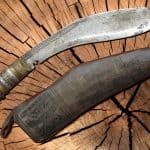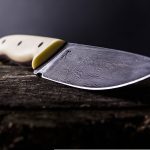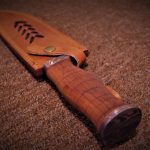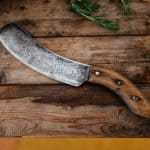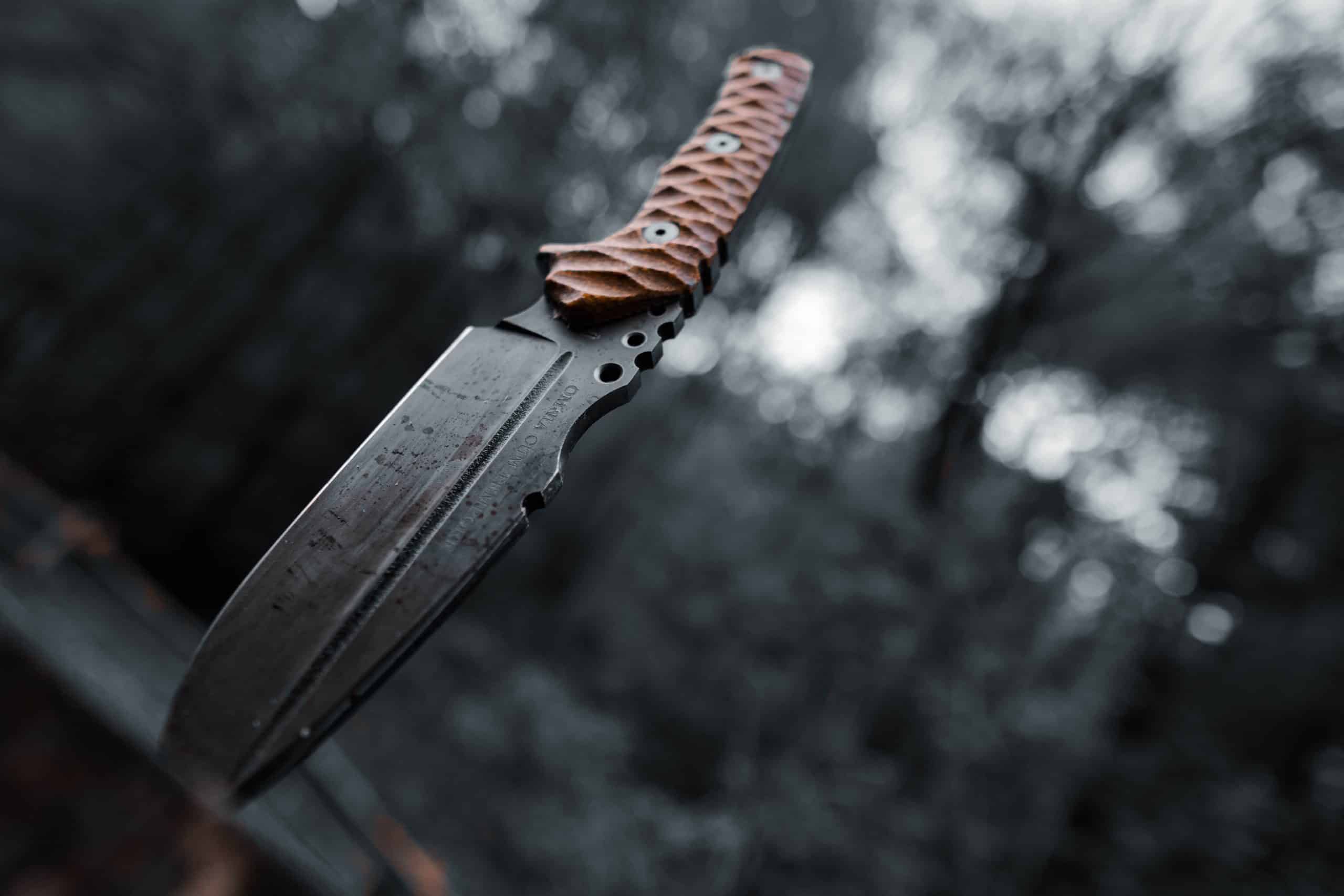
Introduction
Oil stones and wet stones are two popular types of sharpening stones used to grind, hone and polish the cutting edge of knives and tools. Both oil stones and wet stones can provide a effective and reliable method for honing a blade or tool for a durable sharp edge. However, there are several differences between the two types of sharpeners that can affect how well the blade is sharpened.
Oil Stones: Oil stones are structured from an aluminum oxide or silicon carbide abrasive material which is suspended in an oil-based lubricant solution called a “carrier”. As blades are sharpened against an oil stone, its abrasive quality will wear away at the metal to modify the cutting edge. It conditions and protects the blade during grinding on its porous surface by drawing away any excess filings or grit that may accumulate on the cutting edge.
Wet Stones: Wet stones (or waterstones) use a water-based lubricant mixed with an abrasive particle as its medium while sharpening blades. This combination causes less stress to be put on the knife while honing it, which potentially leads to fewer imperfections when grinding than when using other methods such as dry sandpaper. They often have finer particles than oil stones and so tend to round off edges with minimal effort. Waterstones may also require regular flattening of its surface in order for it to perform optimally,with this maintenance task being relatively easy compared to traditional whetstones which require more time consuming applications like pastes or diamond impregnated lapping films often accompanied with complicated steps such as precise angles and directions .
Key Considerations to Ensure You Select the Right Stone
Oil stones and wet stones are two of the most popular varieties of sharpening stones used in metalworking or knife sharpening. You want to make sure that you select a stone that is suitable for achieving the desired result. To ensure that you pick the right stone, here are some key considerations:
1. Stone Grit: Both oil stone and wet stone come in different grits, with lower numbers representing coarser grit and higher numbers representing finer grit. For example, 500 grit is coarser than 1000 grit. Coarse grit is ideal for repairing damaged blades whereas fine grit is for polishing your blade’s surface to create a finer edge.
2. Surface: An oilstone’s surface tends to be much smoother than other types of stones, making it easier on the hands during use. A wet stone also has a rough consistency that needs to be consistently upgraded as more grinding takes place over time.
3. Maintenance: Oilstones need oil lubrication regularly while water should always be used when working with a wet stone to keep it cool and prevent damage to your blade.
4. Price: As an inexpensive choice, an oilstone will cost significantly less than a wetstone and will often be used by beginner knife sharpeners or metalworkers on smaller projects due to its affordability factor compared to other options like diamond stones on the market today
Types of Oil Stones & Their Characteristics
Oil stones are used for sharpening knives, chisels, tools and other cutting blades. They are available in two types: hard and soft. Hard oil stones are usually made of aluminum oxide or silicon carbide and give a sharper edge than soft oil stones, which are made of Novaculite or Arkansas stone.
Hard oil stones are ideal for sharpening tools with harder edges such as stainless steel. Soft oil stones are excellent for sharpening softer blade materials such as carbon steel. Both types of oil stones need to be lubricated before use; mineral oils or petroleum-based products work best and help the cutting process go smoothly by reducing friction between the stone and the tool. When using an oil stone it’s important to hold the blade at a consistent angle, otherwise it won’t sharpen properly. The angle can vary according to what you’re sharpening – generally it’s around 20 degrees for most purposes.
Types of Wet Stones & Their Characteristics
Wet stones are also great for sharpening tools and knives and making them last longer. Wet stones come in various types such as waterstones, grinders and whetstones; they all work the same way by grinding smooth textures on surfaces while adding and preventing rust buildup on contacted objects. Waterstones contain few pores in their structure which helps them work quickly but they do require frequent soaking in water before use while grinders have small diamond abrasive particles that help sharpen effectively but generate a lot of heat during operations, requiring coolant to reduce this heat build-up. Whetstones tend to be softer than both waterstones and grinders so they provide more control over how much is taken off each time but also wear out faster than the others because of it’s softer nature so frequent replacements would be required if used often. All these wet stone types therefore have unique characteristics suitable for particular uses, though each can still produce decent results when used correctly.
Types of Water Stones & Their Characteristics
Oil stone: Oil stones, also called Arkansas stones, are made from quartz and novaculite. They are the oldest type of sharpening stone. Generally, an oil stone consists of a medium-hard silica base material bonded with a harder clay or resin and then a silicone oil is added to reduce friction. Oil stones require less frequent dressing than water stones and they don’t wear down as readily. Their advantages include good control over grinding angles, quick action on steel blades, increased eye appeal due to their oiled surface and ease of maintenance.
Wet stone: Wet stones, often referred to as Japanese Water Stones or Japanese Wet Stones, are composed of aluminum oxide particles mixed in a bonding agent such as Silicon Carbide or Ceramic Aluminum Oxide that is infused in water. The mixed particles are arranged in puzzle-like configurations on the stone’s surface creating tiny channels that allow for consistent sharpening. The advantage of wet stones is that you can use water instead of oil to lubricate the blade which leads to ergonomic operation without causing corrosion or rusting damage due to heat from friction. Wetstones can quickly shape your edge and leave a beautiful finish at the same time whereas oil stones generally require more work since you must ensure not to get the blade too hot during usage. Additionally, some people find working with waterstones easier because it’s absorbing characteristics remain consistent even when working for extended periods compared to oil stones where upon prolonged use its lubricating properties tend to diminish somewhat making it slightly less effective in maintaining sharpening consistency
Advantages and Disadvantages of Using Oil Stones
Advantages of oil stones:
1. Oil stones offer a superior sharpening compared to wet stones since the user can apply more pressure and control the rate of sharpening.
2. They are composed of harder materials, which means that they will last longer and thus give you more value for your money in the long-run.
3. The oil contained in the stone lubricates and cools down the metal before it is cut ensuring that blades maintain their edges for longer periods of time.
Disadvantages of oil stones:
1. Cleaning up an oil stone can be somewhat tedious and time-consuming due to having to scrub off stuck on particles with a nylon brush or even having to use special solvents like kerosene or mineral spirits in some cases.
2. Oil stones are a bit more expensive than wet stones given that they need periodic topping up with honing oil as well as replacement parts when they start showing signs of wear and tear over extended periods of usage despite regular maintenance routines being followed.
Advantages and Disadvantages of Using Wet Stones
One advantage to using wet stones is the superior results they can produce on metal surfaces. The slurry generated from a wet stone sharpening process can help remove more metal than an oil stone, and it achieves a smoother finish as well. Wet stone sharpening also provides some safety benefits, such as less risk of burning the metal due to overheating caused by continuous contact with an oil-coated stone. Furthermore, wet stones are usually easy to clean and maintain compared to oil stones.
The disadvantage of wet stone sharpening is that the slurry created during use causes more mess and makes cleanup time-consuming. This type of sharpening is also often slower than using an oil stone since more passes and greater pressure on the blade is required to remove more metal particles from the surface. The amount of water used also necessitates cutting boards made of wood or other absorbent materials, which could allow for increased moisture transfer that could damage knives with longer blades.
Sharpening Performance of Oil Stones vs Water Stones
Oil stones and water stones are both used for sharpening tools and blades, but there are some key differences between them. Oil stones require honing oil as a lubricant that helps reduce friction, while water stones require the application of water. This creates a slurry on the surface of the stone which also reduces friction, and forms tiny particles of metal (swarf) that can be washed away with water. In terms of performance, oil stones are typically preferred over water stones because oil helps to reduce the heat caused by grinding which can cause blunting or other damage to your tool’s edges. Additionally, oil stones tend to produce a smoother edge on the blade due to their slower cutting characteristics. On the flip side, water stones cut faster than oil stones so they offer much faster results when you need to sharpen quickly. They also create less mess since they don’t require an additional lubricant and swarf can easily be washed away in water instead of needing to be collected separately. Ultimately, either stone will work for sharpening purposes depending on user preference and type of job you’re working on — but it’s important to take into account all the differences between them before deciding which one is right for you!
Care & Maintenance Tips for Both Oil and Wet Stones
Oil stones require regular lubrication with oil to keep them working efficiently, whereas wet stones do not need any additional lubrication. Regular maintenance will extend the life of both stone types and ensure consistent performance.
Oil Stones: For oil stones, ensure they are kept clean and lightly oiled weekly with a high quality mineral oil. Check the condition of the stone regularly and if it becomes pitted or pitted extensively in spots then it is time to resurface it using honing powder and/or a brush wheel, as per manufactures instructions. If rust appears on an oily stone, clean it off with water-dampened steel wool before application of fresh oil.
Wet Stones: Keep your wet stone free from deposits and build up with regular cleaning with a soft brush or cloth, preferably when you finish sharpening each time. To prevent corrosion, only use water for dampening when sharpening on wet stones and avoid use of soap or detergent as this can damage the surface of the stone. For added protection from rusting, occasionally apply a coat of light machine or vegetable oil to the dry stone surface after cleaning. Resurfacing may be required periodically if any scratches appear on the stone surface over time
How to Choose Between an Oil Stone and a Water Stone
Oil Stones and water stones are two of the most popular sharpening stones for blades. Oil stones rely on oil to keep the blade cool during the sharpening process and lubricate the pores on the stone. These stones are often more coarse than water stones, making them more ideal for restoring blunt edges. Water stones also come in various coarseness levels, but they require a lot of soaking before use as they need to be wet throughout the sharpening process. As such, these types of stones are better for finishing edges after using finer stones or when an extra fine adjustable edge is required. When choosing between an oil stone and a water stone, it is important to consider the size of your blade and how much time you have available to spend on sharpening. If you need to sharpen large blades quickly, then an oil stone may be best; however if you have smaller blades or want a smoother finish, then water stones may be a better option. Remember that practice makes perfect; so take some time and experiment with both types of sharpening stones
Conclusion
When it comes to choosing between an oil stone and a wet stone for honing, sharpening, and polishing, carefully consider the type of application needed. An oil stone is a fine-grained stone that can be used with oil or water as a lubricant. Its exact shape will depend on whether it is being used for double-sided sharpening or single-sided honing. A wet stone is usually harder than an oil stone, although it may be softer depending on the grit size. It should only be used with water and needs to be rinsed continuously during use in order to wash away debris.
Oil stones are a good option when looking to quickly sharpen tools like chisels or lawnmower blades while producing high precision results with little effort. They are also best suited for creating a smooth finish on edges of metals and hardwood due to their large variety of grain widths which allow subtlety in approach. Wetstones are better suited handling heavier projects such as sharpening tools like machetes which require more aggressive grinding action that can’t be achieved by an oil stone without damaging its surface. Additionally, wet stones last longer than most other materials such as diamond stones for their ability to dissipate heat efficiently when used regularly over time making them perfect for continued and long term use cases. In the end, selecting either an oil stone or wet stone truly depends on the applications asked of the user – so take into account your project goals before making any investment!








